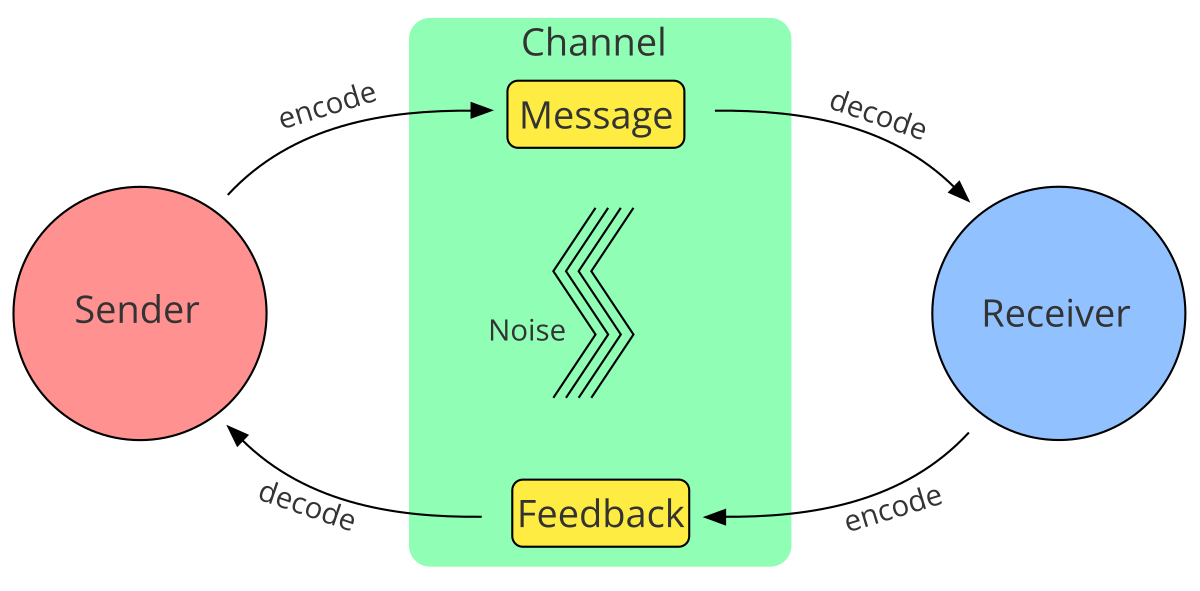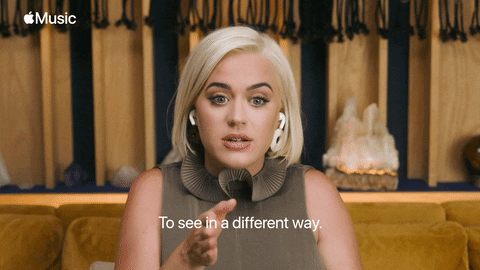👪 Truly understand and reach your marketing target groups
About the art of looking at the customers point of view and identifying insights about them.
Hi 👋 I’m Florian Schleicher. This is the FutureStrategies newsletter of FUTURES. Thank you so much for reading along 💚
In marketing, we have one goal above all:
To reach customers and potential customers.
Sounds simple.
The challenge is that we need to understand our target audience first. We have to learn where they are, what their problems are, how they communicate and where we can come into play in the process.
Only when we truly understand the people we want to reach can we align our marketing with them and thus successfully communicate and achieve our goals.
Every good marketing strategy starts with a deep understanding of the target group.
So today I'm writing about how we can do just that: Understand our target group. Or in other words: put on the customer's point of view (POV).
So I'll answer these questions:
Why is it so important to understand them?
What are the methods for doing so?
What does this have to do with the theory of the same character set?
What helps us in everyday life?
🤔 Why is it important to understand our target groups?
Marketers are also often not good at putting themselves in other people's shoes.
Most start with the questions, "If I were a consumer, how would I feel?" or "Would I like this as a consumer?"
So often people start with marketing POV.
What we need, however, are the customer POV of our counterparts.
“The more you can cater your communication style to that of your intended audience, the more effective your message will be.”
Matt Johnson & Prince Ghuman in Blindsight
That also sounds logical. Here is another study that expresses this in figures:
Customers who feel understood are 4x more likely to repeat a purchase and 5x more likely to recommend these companies positively.
So it's no surprise that 91% of marketers believe that a better understanding of customers leads to better marketing decisions.
But: A Forrester study found that 65% of marketers do not find it easy to emotionally respond to their target groups.
It seems easy to write down a target group definition, such as: "People in our capital city, between 20 and 35, employed and single, to whom free time is important and who like to go out to eat."
But does that really help us understand what makes them tick?
What drives them? What problems and needs do they have?
Where do we gather the insights that form the basis for our marketing to really reach a target audience?
The basis of every successful communication campaign is an insight.
In short: an emotional expression of an unfulfilled need or desire that is not obvious, but touches and triggers an "AH!”.
So good communication does not start with us as a company.
It starts with our target group.
So far so good and clear.
🕵️♂️ What methods are there to identify these insights?
As a marketing strategist, one of my main tasks is to understand people. And not just superficially, but in their deep desires - which often they don't even consciously know themselves.
That is a little art.
“We cannot ‘mine’ for insights. They’re not waiting to be uncovered. They’re the product of thought and analysis.”
Today I'm going to show you three of seven tracks I've come up with over the last few years that help me filter out these insights:
Let's start with anomalies.
In doing so, I ask myself questions like:
Are there surprises?
Do we see unexpected ups or downs in our market segment?
Do we find statistical outliers that cannot be explained at first glance?
An example of this from the fashion company LaModa, which wanted to expand into Russia several years ago (when it was still desirable). The country has 100 million people in the middle class and 75 million Internet users. That sounds like a predestined market for online retail. And yet the business, which runs flawlessly in all comparable markets, didn't work there at all. Why?
So the tried-and-true online sales system can't work. LaModa's solution? They've hired couriers to bring packages directly to customers and offer cash-upon-delivery.
A second track is preserved.
I'm driven by questions like:
Do we question existing patterns?
Are there assumptions or beliefs that are not being questioned?
Or toxic behaviors or processes that are not being reconsidered?
A great example is Always's "Like a Girl" campaign. Or this campaign by Lynx that breaks down the conservative image of men:
And as a third example: Travel (sometimes also the reason why other cultures fascinate me so much).
Helpful questions here are:
What can we learn from new environments?
How do people live, work, and behave in other places?
What social, cultural, or environmental factors influence their behavior?
A very nice example of this is the story of Embrace Nest, described by Greg McKeown in his book Essentialism:
A group of students is commissioned to develop a baby incubator for 1% of the traditional cost of $20,000. That's because, in developing countries, 4 million low-birth-weight babies die within the first 28 days because they don't have enough fat to regulate their body temperature.
The classic approach would have been to simply produce an inexpensive electric incubator.
The students, however, really wanted to understand the problem and traveled to Nepal to see the challenge.
There they found out: 80% of babies are not born in hospitals, but at home, in rural villages - without electricity. So the problem, in addition to the low budget, was the lack of electricity.
Thus was born the "Embrace Nest", which uses a waxy substance that is heated in water and thus simply helps to maintain the natural temperature.
So we need to get out into the world and see a lot to understand people, or as Ara Kurnit writes in the New York Times:
“Be a student of the world and get out there. Working remotely has provided valuable flexibility and autonomy, but being housebound isn’t great for strategy.”
That's why I'm a passionate observer whenever I'm in a coffee house, on vacation, in other cities, and even if it's just on a business trip.
Nothing happens without a reason and usually not without a need. Only when people have a reason to act, they do act.
We need to understand these needs in all their facets.
And this also includes the way our target group communicates.
🔣 The theory of the same character set
A brief history excursus:
In the 1940s, the two model developers Claude Elwood Shannon Warren Weaver defined a basic concept of human communication with the sender-receiver model.
Driven by mathematical rules, they wanted to define what are important prerequisites for successful communication.
Only the transmission of the message from one place to another is considered. Since they were technicians in a telephone company, they saw the main problem as "interference".
For the two developers, communication is "receiving a message from a sender who uses the same character set to transmit the information as the receiver."
So, as in Love Languages, it's about understanding how my counterpart communicates, which words are used how, when they use which channels, and how.
The situations of our target groups are the signs with which we can work.
And in doing so, we have to leave our internal company view and recognize:
1️⃣ People have problems and challenges that they have to overcome in their everyday lives (work, leisure, family) - these often have nothing to do with my company.
2️⃣ However, there are issues that are close to their hearts - that we can build on as a company.
3️⃣ We have to combine the internal view as a company with this external view of our target groups - the people in real life - if we want to reach them successfully.
👀 What helps us do this?
As described in the traces, there are clues. To find these insights again and again, there are a few tools that I like to use (besides travel, which unfortunately is not always possible):
Books - specialized literature about psychology as well as novels in which people are described who tick quite differently than we do ourselves.
Needs analysis - such as Maslow's pyramid of needs or Tony Robbins' 6 needs model.
Data and statistics - in doing so, it is important to find the right ones, as Kara Buckner of Fallon writes:
“We are living in the golden age of information. Figures and facts – as well as the tools and techniques to extract them – are more plentiful than ever. But it feels like we’ve become certifiably and undeniably DATA DRUNK. We’ve been wooed by numbers. Our judgment’s gotten cloudy. We’ve become overly enamored with what we can measure. To truly unleash its power, data must be humanised.“
Empathy - some people (including myself) find it easier to put themselves in the shoes of others. They have a high proportion of mirror neurons, which helps them to understand how their fellow human beings feel.
Filtering out this multitude of observation points is the task of strategists and planners like me and many other capable colleagues.
👉 It all comes down to behaving
Companies and communications managers must learn the language of their target groups. And must not always start from themselves.
We can remind ourselves of this every day, as Brent McKinley, Director of Business Development at ExeVision, Inc describes in a beautiful story:
When I was director for a large tech company in Mountain View CA, my team printed coffee mugs that said “I Am Not My Target Audience!”
This mug has been on my desk for over 20 years, helping me remember to “get outside of my own mind”.
This constant reminder has guided my marketing thinking and my focus on a customer’s needs, more than anything else in my entire career.
We all need such a hint and must honestly want to understand what is on the minds of our target groups so that we can reach them.
Otherwise, our campaign will miss the mark, our communication will simply fade away and not hit the fertile ground.
“Strategy is all about being good at behavior. You’ve got to know how to move people, markets, companies, cultures. The more you can connect and stack those behaviors, the yummier and more insightful your strategic and creative outcomes will be.”
Jen Costello, chief strategy officer at TBWA\Chiat\Day
Thanks for reading.
PS: You can also read this posting in German.
Looking for more reading material?
📚 3 books, 2 newsletters, and 1 podcast - Content that inspired me last year.
🛍 The trend towards reward consumption - Why we are rewarding ourselves more and more, what this has to do with Miley Cyrus "Flowers" and how we can work with it in marketing.
🧩 4 simple steps for successful storytelling - Why do stories exist? What contribution do they have to strategic marketing today? And how do we tell them best?
✅ Green marketing with strategy - What does it take for strategic green marketing and which companies are doing a good job?









